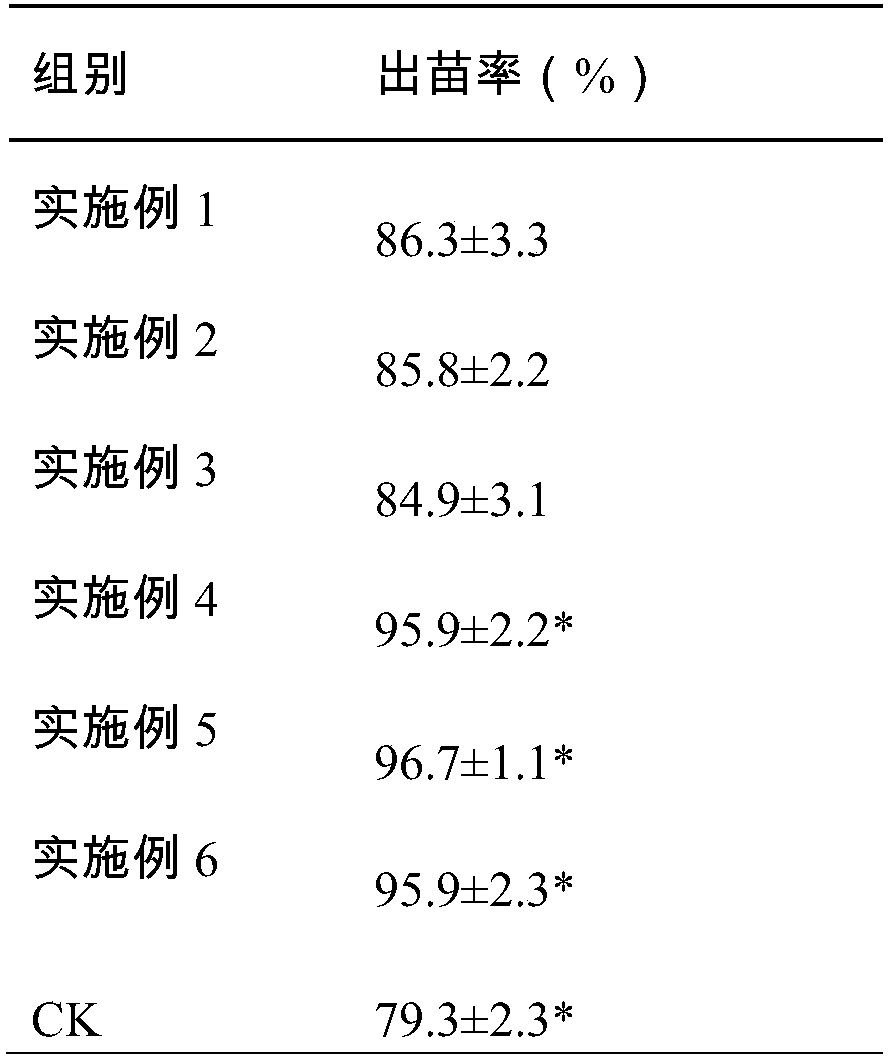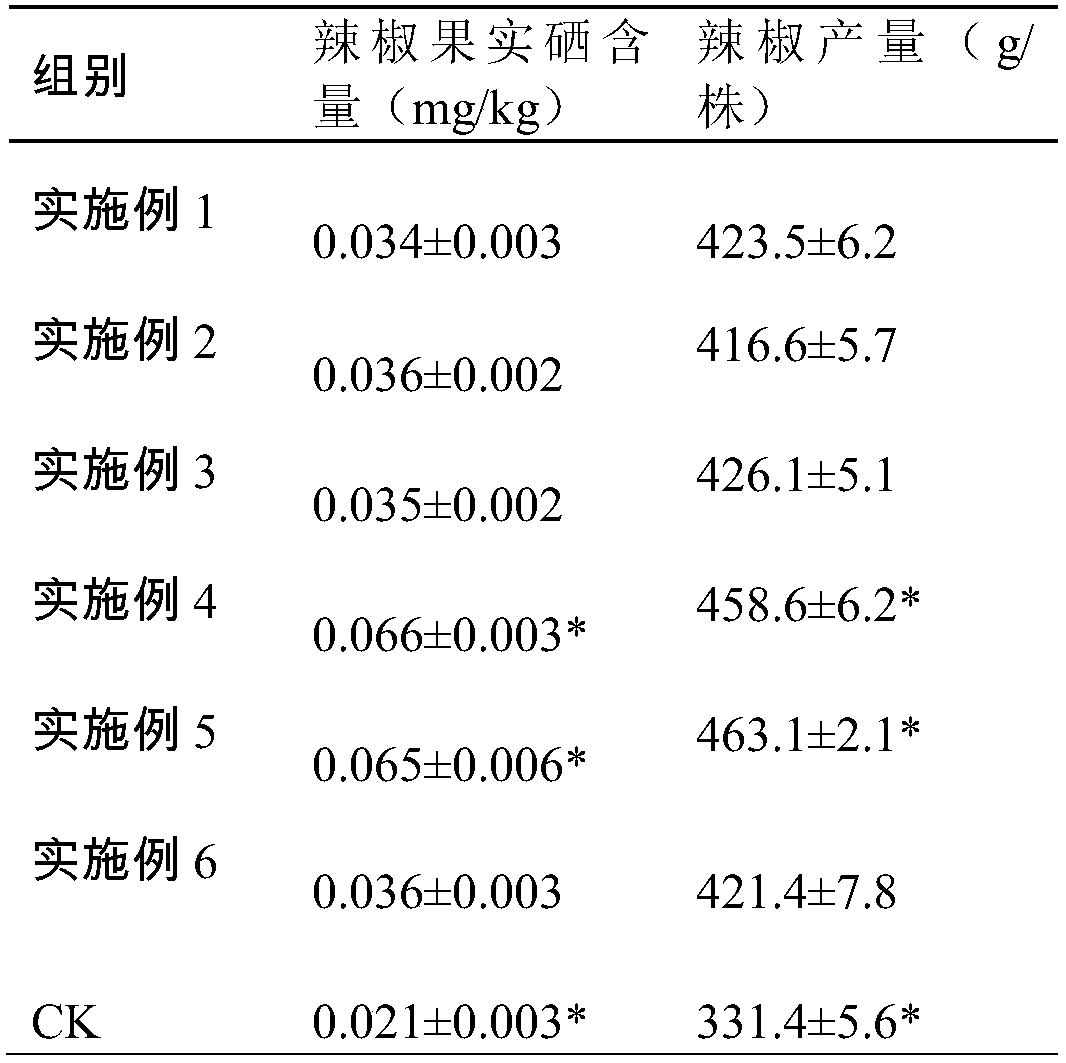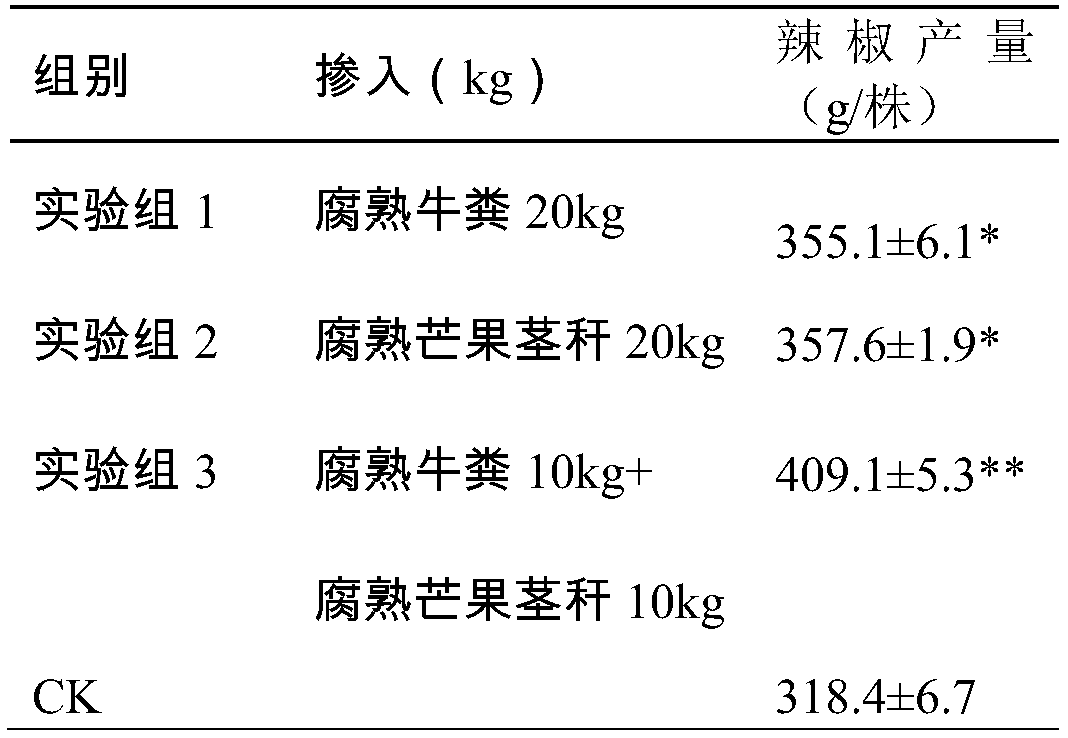Selenium-rich pepper culture substrate and preparation method thereof
A technology of cultivation substrate and pepper, which is applied in the field of selenium-rich pepper cultivation substrate and its preparation, can solve the problems of inability to effectively absorb selenium and increase the cost of pepper planting, so as to increase the yield per plant, improve resource utilization, and increase selenium. The effect of content
- Summary
- Abstract
- Description
- Claims
- Application Information
AI Technical Summary
Problems solved by technology
Method used
Image
Examples
Embodiment 1
[0023] A selenium-enriched pepper cultivation substrate is made of the following components in parts by weight: 30 kg of soil, 30 kg of decomposed cow dung, 20 kg of sand, 20 kg of decomposed mango stalks, and 25 kg of water. The soil is sandy soil in the north, which is slightly alkaline and has a pH of 8.0.
[0024] The preparation method of the above-mentioned selenium-enriched capsicum cultivation substrate is carried out according to the following steps:
[0025] (1) Weigh the following components according to the mass percentage: 30kg of soil, 30kg of decomposed cow dung, 20kg of sand, 20kg of decomposed mango stems;
[0026] (2) Evenly mix the weighed soil, decomposed cow dung, sand, and decomposed mango stalks, add 25 kg of water, stir evenly, and adjust the pH to 6.8 with acetic acid solution.
Embodiment 2
[0028] A selenium-enriched pepper cultivation substrate is made of the following components in parts by weight: 25 kg of soil, 20 kg of decomposed cow dung, 15 kg of sand, 10 kg of decomposed mango stalks, and 10 kg of water. The southern red soil is used, which is slightly acidic and has a pH of 6.0.
[0029] The preparation method of the above-mentioned selenium-enriched capsicum cultivation substrate is carried out according to the following steps:
[0030] (1) Weigh the following components according to mass percentage: soil 2kg, decomposed cow dung 20kg, sand 15kg, decomposed mango stem 10kg;
[0031] (2) Evenly mix the weighed soil, decomposed cow dung, sand, and decomposed mango stalks, add 10-35 parts of water, stir well, and adjust the pH to 7.0 with potassium hydroxide solution.
Embodiment 3
[0033] A selenium-enriched pepper cultivation substrate is made of the following components in parts by weight: 35kg of soil, 40kg of decomposed cow dung, 25kg of sand, 30kg of decomposed mango stalks, and 35kg of water. The sandy loam soil in the south is used, which is slightly acidic and has a pH of 6.1.
[0034] The preparation method of the above-mentioned selenium-enriched capsicum cultivation substrate is carried out according to the following steps:
[0035] (1) Weigh the following components according to the mass percentage: 35kg of soil, 40kg of decomposed cow dung, 25kg of sand, 30kg of decomposed mango stems;
[0036] (2) Evenly mix the weighed soil, decomposed cow dung, sand, and decomposed mango stalks, add 35 kg of water, stir evenly, and adjust the pH to 7.2 with potassium hydroxide solution.
PUM
 Login to View More
Login to View More Abstract
Description
Claims
Application Information
 Login to View More
Login to View More - R&D
- Intellectual Property
- Life Sciences
- Materials
- Tech Scout
- Unparalleled Data Quality
- Higher Quality Content
- 60% Fewer Hallucinations
Browse by: Latest US Patents, China's latest patents, Technical Efficacy Thesaurus, Application Domain, Technology Topic, Popular Technical Reports.
© 2025 PatSnap. All rights reserved.Legal|Privacy policy|Modern Slavery Act Transparency Statement|Sitemap|About US| Contact US: help@patsnap.com



